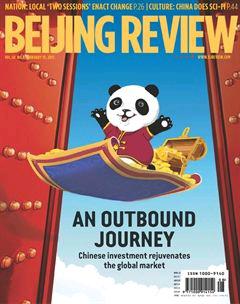RRR Cut Aims to Redirect Capital Flows
Beset with troubles in both domestic and international markets, the Peoples Bank of China(PBC), the countrys central bank, finally cut the reserve requirement ratio (RRR) for all financial institutions by 0.5 percentage points on February 5. An additional targeted RRR cut of 0.5 percentage points also took effect for city and rural commercial banks with sufficient exposure to small and medium-sized enterprises. The RRR for Agricultural Development Bank of China was reduced by 4 percentage points.
The news, though sudden, isnt surprising. This cut favors all sectors of the economy because it can unleash a liquidity of 600-700 billion yuan ($97.88-114.19 billion), which will help boost the real estate and stock markets and allow various banks to have more money to lend. The model of both extensive and targeted reduction also indicates that the central bank is using monetary policy tools in more flexible and mature ways.
However, we still need to note that the central bank has no option but to make the reserve rate cut. This means quantitative easing is coming forward to replace the current, and more prudent, one. The PBC is likely to continue cutting the RRR and interest rates, which may lead to the yuans depreciation. Meanwhile, preventing investment inflation has become a major task for the Chinese Government.
The public should not be too optimistic about this round of RRR cuts, and commercial banks and the supervising authorities should never relax the guidance of liquidity flow freed up by the RRR cut. We should make proper judgment on the RRR cut and push the unleashed money into appropriate sectors. Both extensive and targeted cuts of the RRR are intended to redirect money into the real economy. The central bank, in particular, aims at guiding financial institutions to support economic restructuring and give more aid to small and micro businesses, as well as agricultural and key water conservancy projects. The freed-up liquidity must be prevented from completely flowing into the stock and property markets or industries with surplus production capacity.
Commercial banks, after gaining a huge amount of liquidity after the RRR cut, must strengthen research on credit support, innovate credit models and increase credit supplies, so that all the unleased liquidity can be used to support the development of the real economy.
Rural commercial banks above county level should have clearer market positioning and mainly grant credit to small and micro businesses, while county-level rural commercial banks, rural credit cooperatives and the Agricultural Development Bank of China should inject the unleased money into local projects and prevent it from flowing into urban areas. They must, guided by the policies of strengthening agricultural infrastructure and guaranteeing grain production laid down by the Central Government this year, innovate the method of granting credit and effectively solve the financing difficulty involving agriculture, the countryside and farmers. Only when the real economy and agriculture become more developed can the measure of RRR cut be fully effective, thus promoting sound development of the Chinese economy and fighting off the negative impact brought by increased money supply.
Currently, the central bank has the power of formulating monetary policies, but it is in- capable of supervising the flow of capital. This deficiency must be made up by local governments at various levels and banking supervising authorities. Local governments should improve their tax preference, credit guarantee and risk compensation fund policies, so that commercial banks dont have to worry and can instead input all the unleashed liquidity into the real economy.
Banking supervising authorities must draw lessons from targeted RRR reduction and interest rate cut last year, improve the evaluation and supervision mechanisms on commercial banks and urge commercial banks to input the unleashed liquidity into industries supported by the macroeconomic policies. Money freed up by the RRR cut must be prevented from flowing into large enterprises, the stock market and the housing market.
The RRR cut is far from enough to fundamentally reverse the unfavorable conditions Chinese economy faces. The Central Government must urgently set up an evaluation system on the flow of capitals unleashed by RRR cuts. Otherwise, even if the RRR drops to zero and commercial banks can lend 100 percent of the deposits they attract, the real economy would have inadequate money to develop, and the country would never step out of the vicious monetary policy circle of a worsening economy followed by an RRR cut.

